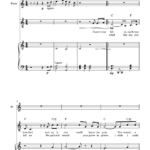Bluegrass music, with its toe-tapping rhythms and intricate melodies, is more than just a genre—it’s a cultural tapestry woven from America’s diverse musical heritage. Originating in the Appalachian region during the mid-20th century, it embodies a harmonious blend of Celtic, African American, and rural musical traditions.
The sound of bluegrass is unmistakable, featuring fast-paced banjos, soulful fiddles, and the distinctive twang of the mandolin. Each instrument plays its part, coming together to create a symphony of storytelling and emotion.
Delving into the history of bluegrass reveals a journey through time and place, shaped by pioneers like Bill Monroe, who is affectionately known as the "Father of Bluegrass." The music echoes the resilience and spirit of the communities that birthed it, offering listeners a unique connection to America’s past.
Discover the dynamic evolution of bluegrass, where tradition meets innovation, and explore how modern artists continue to push boundaries while staying true to the genre’s roots. Whether you’re a lifelong fan or a curious newcomer, this exploration promises to enlighten and inspire, celebrating the enduring legacy and vibrant soundscape of bluegrass music.
Exploring the Roots of Bluegrass Music
At its heart, bluegrass music is a vibrant quilt of cultural influences. Its roots can be traced back to the early settlers of the Appalachian region, where immigrants brought with them the musical traditions of their homelands. These early sounds laid the groundwork for what would become a distinctive American genre.
A Melting Pot of Sounds
Central to bluegrass is its melting pot nature. Irish and Scottish melodies arrived with European settlers, their lively jigs influencing the rhythmic structure of early bluegrass. Meanwhile, African American musicians introduced elements like the banjo, an instrument that quickly became synonymous with the genre.
Back in the 18th and 19th centuries, folk and gospel music filled homes and communities, fostering a spirit of storytelling and shared experience. These elements infused bluegrass with its trademark narrative quality, inviting listeners to embark on a musical journey filled with heartfelt tales of love, loss, and life in the mountains.
As the music evolved, string bands began to emerge, creating a new, uniquely American sound. This fusion of different traditions and sounds became the backbone of bluegrass, shaping a genre that reflects both hardship and hope, all while celebrating the universal language of music.
Influential Figures in Bluegrass History
The story of bluegrass music cannot be told without acknowledging its influential figures, whose talents and innovation paved the way for what the genre is today. At the forefront is Bill Monroe, whose mastery of the mandolin and compelling compositions earned him the title of the "Father of Bluegrass." His band, the Blue Grass Boys, was instrumental in defining the genre’s signature sound.
Pioneers and Innovators
Another pillar is Earl Scruggs, whose revolutionary three-finger banjo picking style transformed the instrument’s role within bluegrass music. As a member of Monroe’s band, Scruggs helped elevate the banjo to iconic status, inspiring generations of musicians.
Lester Flatt, another key figure, teamed up with Scruggs to form the groundbreaking duo Flatt and Scruggs. Their innovative collaborations and recordings, like "Foggy Mountain Breakdown," solidified their place in bluegrass history.
The Stanley Brothers, Carter and Ralph, brought a distinct mountain sound to the genre, contributing richly layered harmonies and soulful performances. Their dedication to preserving traditional Appalachian music ensured that bluegrass could stay true to its roots while evolving into new territories.
From these trailblazers to today’s artists, bluegrass history is filled with influential figures whose legacies continue to echo in every pluck and twang you hear.
The Unique Instrumentation of Bluegrass
Central to bluegrass music is its distinctive instrumentation, which creates a dynamic and lively sound. The banjo, with its bright and resonant tones, stands out as a hallmark of the genre. Its fast-paced picking, popularized by Earl Scruggs, adds an energetic rhythm that drives many bluegrass tunes.
The mandolin, wielded expertly by Bill Monroe, lends a sharp percussive chop that complements the rhythm section. Often playing lead or harmony, the mandolin’s crisp sound provides a perfect counterpoint to the other instruments.
Guitars, typically acoustic, provide the backbone of bluegrass music, offering both rhythm and lyrical melodies. The flatpicking style commonly used in bluegrass emphasizes clean, rapid notes that enhance the music’s upbeat tempo.
Fiddles bring an expressive richness that can evoke both joy and melancholy, weaving intricate melodies that capture the heart of listeners. Meanwhile, the upright bass holds it all together, providing a steady foundation that grounds the vibrant interplay of instruments.
Together, these instruments create a seamless blend, each contributing its voice to the complex yet harmonious tapestry of bluegrass. It’s this unique instrumentation that gives the genre its unmistakable sound and enduring appeal.
Evolution of Bluegrass Sound Over the Years
Bluegrass music, while rooted in tradition, has continuously evolved since its inception. Initially, the genre was closely tied to its Appalachian origins, with acoustic instruments and storytelling elements at its core. This traditional sound laid the foundation for later innovations.
Newgrass and Beyond
In the 1960s and 1970s, a new wave of musicians began to push the boundaries of bluegrass, leading to the emergence of "newgrass." This subgenre infused elements of rock, jazz, and folk, offering a fresh take on traditional styles. Artists like the New Grass Revival and Béla Fleck spearheaded this movement, blending intricate musical arrangements with a diverse range of influences.
The late 20th and early 21st centuries saw further experimentation as bands like Nickel Creek and Punch Brothers embraced progressive bluegrass. They introduced unconventional song structures and complex harmonies, appealing to a broader audience while staying true to bluegrass roots.
Today, bluegrass continues to thrive, bridging generational gaps and incorporating global influences. While some artists honor traditional sounds, others explore new territories, ensuring that bluegrass remains a dynamic and ever-evolving genre. This blend of old and new keeps the music fresh, continuously captivating audiences worldwide.
Regional Variations in Bluegrass Music
Bluegrass music, while originating in the Appalachian Mountains, has branched out into various regional styles, each adding its unique flair to the genre. These regional influences have enriched bluegrass, allowing it to thrive and evolve across different landscapes.
In the southeastern United States, where bluegrass first flourished, the music retains a strong connection to its roots. This traditional style emphasizes storytelling and acoustic instrumentation, often featuring the high lonesome sound that characterizes Appalachian music.
As bluegrass spread westward, the Midwest added its own spin, often incorporating elements of country and folk. This blend gives Midwestern bluegrass a mellower tone, resonating with the region’s expansive plains and heartland sensibilities.
The Pacific Northwest, known for its vibrant music scene, embraced bluegrass with open arms, blending it with folk and indie influences. This fusion creates a more eclectic sound, appealing to a diverse audience and integrating elements from various musical traditions.
In the Northeast, bluegrass intermingles with contemporary folk and Americana, lending a modern edge to the genre. These variations demonstrate bluegrass’s adaptability, thriving as different regions across the country embrace and reshape it, while still celebrating its rich heritage.
The Bottom Line: Bluegrass Music Today
Today, bluegrass music stands as a vibrant testament to the power of tradition meeting innovation. This genre, with its deep-rooted history, has gracefully adapted to the modern world without losing its authentic charm. With each pluck of the banjo and strum of the guitar, bluegrass continues to forge connections across generations and cultures.
Contemporary bluegrass remains faithful to the essence established by its pioneers while also welcoming fresh influences. New artists experiment with the sounds of jazz, rock, and even pop, ensuring that bluegrass remains relevant and engaging. This flexibility allows the genre to grow, attracting new listeners and keeping longtime fans hooked.
Festivals and gatherings around the globe celebrate this lively music, bringing together seasoned musicians and eager novices. These events offer a unique space for collaboration, innovation, and preservation of the bluegrass tradition, highlighting the community spirit that has always been at the heart of the genre.
Besides this, bluegrass’s welcoming nature invites fans not just to listen, but to participate. Whether it’s through picking up an instrument or sharing stories that the music inspires, bluegrass has a way of bringing people together. Its enduring legacy is a reminder of the genre’s remarkable ability to adapt and thrive.
The continued evolution and popularity of bluegrass demonstrate its dynamic nature, proving that while it honors its past, it is also very much a part of the present. In essence, bluegrass music today is a celebration of history, a journey of innovation, and a promise of timeless charm that keeps on resonating.
















